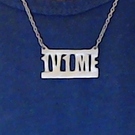I have a rigid body character controller player.
I start a server and connect with a client.
The client and the server have a player each.
The client sees the following thing:
When the server player moves, it’s rotation snaps and freezes to some angle, and it’s location drifts.
After the player stops moving for some time, it’s rotation and location get corrected. When it moves again, it goes back to being incorrect.
What is causing it? It seems like when the rigid body is active the node replication gets messed up.

